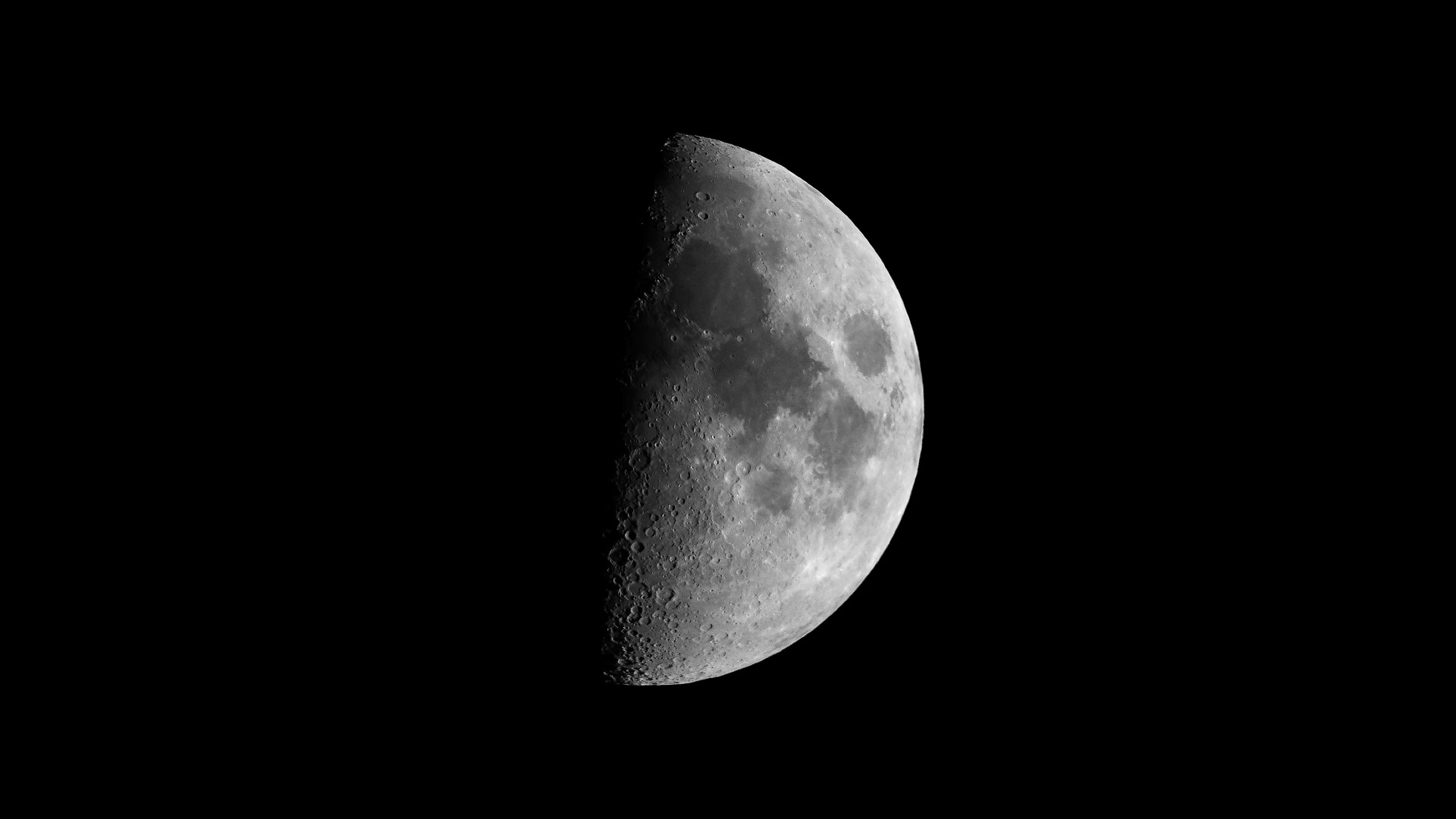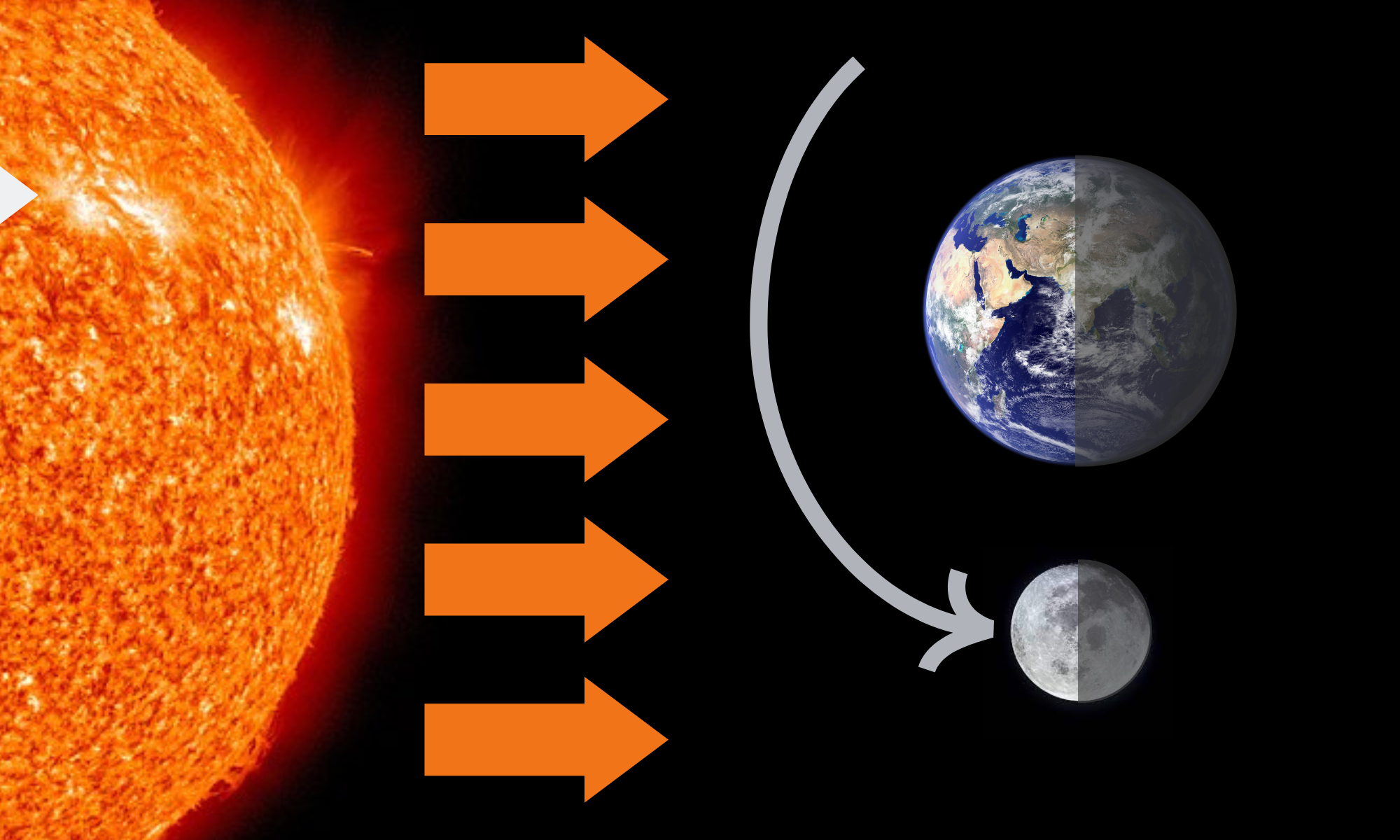See the first quarter moon on Saturday (Sept. 3)
During the first quarter moon on Saturday (Sept. 3) the sun will illuminate half of the lunar surface.

The moon passes through its first quarter phase on Saturday (Sept. 3). During this lunar phase, the disc of the moon is nearly exactly 50 percent illuminated by the sun as seen from the Earth.
The half-illuminated moon will be viewable over New York at 7:42 p.m. ET (2342 GMT), located at around 23⁰ above the southern horizon as the sky darkens. The first quarter moon will set 3 hours and 47 minutes after sunset, at around 11:12 p.m. ET (0312 GMT on Sunday, Sept. 4).
During the first quarter phase, the moon rises at around midday and sets at around midnight. This is the mirror opposite of the third quarter moon, which rises around midnight and sets around midday.
Related: September full moon 2022 guide: the Harvest Moon
The first quarter moon arises as a result of the moon's approximate four-week journey around the Earth. This creates the approximate 29.5-day cycle from the new moon to the first quarter to the full moon to the third quarter (or final quarter) and then back to the new moon.
The time the moon takes to move through this cycle is known as the 'lunar month.' Throughout this cycle, the moon becomes visible at different times of the day. As the first quarter moon approaches it sets later each night, meaning it is visible for longer each night. By the time the full moon is reached it will be visible most of the night, only setting at around dawn.
Because the moon's orbit around Earth is elliptical — a flattened circle — the length of the lunar month varies, meaning the time between one first quarter moon to the next changes slightly. This difference arises from the fact that the moon orbits the Earth more rapidly when it is closest to the planet.
Get the Space.com Newsletter
Breaking space news, the latest updates on rocket launches, skywatching events and more!


Looking for a telescope to see the first quarter moon? We recommend the Celestron Astro Fi 102 as the top pick in our best beginner's telescope guide.
The longest lunar month occurs when subsequent new moons occur as the moon is at its farthest point from the sun, also known as apogee. The shortest lunar month happens when two new moons fall around the perigee — when the moon’s orbit brings it to its closest point to Earth.
During the first quarter moon phase, the moon is described as 'waxing' meaning that the area of the lunar disk that appears illuminated from Earth is increasing from its minimum at the new moon to its maximum at the full moon. After the full moon, the moon will be 'waning,' meaning this illuminate region is receding again.
The current lunar month began with a new moon on Aug. 27, 2022, and the next full moon occurs on Sept. 10. This lunar month ends on Sept. 25, 2022.
If you miss the opportunity to observe this first quarter moon the phase will occur again on Oct. 2 at 8:14 p.m. ET (0014 GMT on Oct. 3).
Editor's Note: If you snap a photo of the quarter moon and would like to share it with Space.com's readers, send your photo(s), comments, and your name and location to spacephotos@space.com.
Follow us on Twitter @Spacedotcom or on Facebook.
Join our Space Forums to keep talking space on the latest missions, night sky and more! And if you have a news tip, correction or comment, let us know at: community@space.com.

Robert Lea is a science journalist in the U.K. whose articles have been published in Physics World, New Scientist, Astronomy Magazine, All About Space, Newsweek and ZME Science. He also writes about science communication for Elsevier and the European Journal of Physics. Rob holds a bachelor of science degree in physics and astronomy from the U.K.’s Open University. Follow him on Twitter @sciencef1rst.










